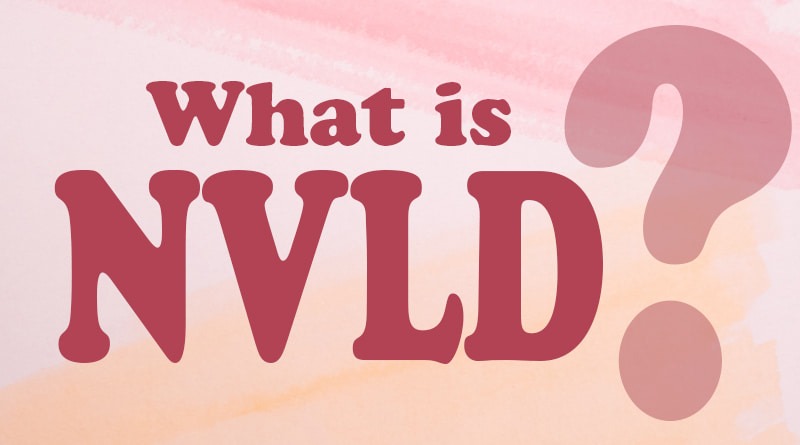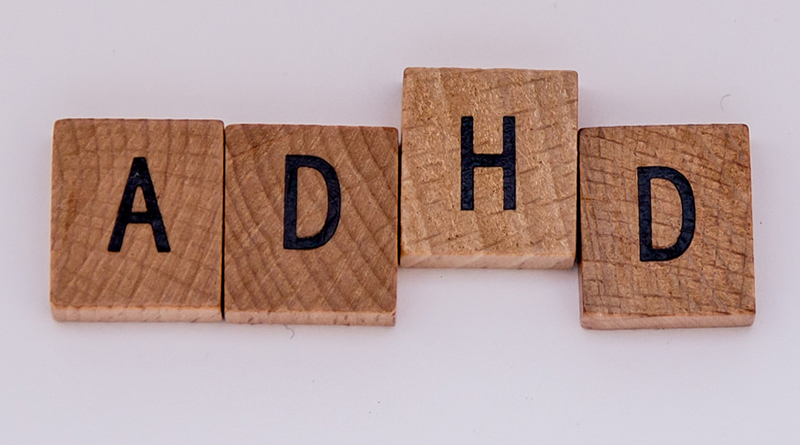
What is Nonverbal Learning Disorder?
By Julia Futo
Understanding NVLD
Simply put, nonverbal learning disability or disorder (NVLD) is a difficulty in picking up concepts and patterns visually, socially, and academically. The challenges with these specific groups of skills are not language-based, like speaking, reading, and writing, but rather, have to do with unspoken language.
Nonverbal learning disability can be broken up into five main categories:
Social Communication
The “nonverbal” part of nonverbal learning disorder has to do with difficulties in understanding the nonverbal cues of others, such as body language and tone of voice. Because people with NVLD may miss out on these social cues, they may also have difficulties reading the emotions of others, might not know what behaviors qualify as “appropriate” or “inappropriate” in a social setting, and/or frequently misinterpret situations.
They may think in literal or concrete terms and have difficulties distinguishing idioms, humor, and sarcasm from being serious. They may also have the habit of changing the subject of a conversation abruptly and may not even know they got off topic because they think what they are talking about is related to the topic of conversation.
Although people with nonverbal learning disorder may have difficulties with unspoken language, they may have normal verbal communication skills.
Due to all of the above, it may be especially challenging for people with NVLD to make friends, since they have difficulties fitting in and picking up on nonverbal cues.
Visual and Spatial Awareness
Although people with NLVD may have a normal and healthy eyesight, they may struggle recall visual information (things they observe) and may also have difficulty trying to explain it to someone else. They may also lack spatial awareness, which causes them to bump into people and other things more frequently than normal.
Difficulties with higher order comprehension combined with a weakness of visual awareness can turn reading and interpreting charts and diagrams into a real struggle for people with nonverbal learning disability. The simple sight or thought of having to interpret graphs and charts can easily overwhelm those with NVLD; especially if the graphs and charts have a lot of data on them.
The grasping of visual-spatial information also proves to be a challenge for people diagnosed with nonverbal learning disorder. They may not be able to understand the relationship between what they see and what the thing they see is or means.
Higher-Order Comprehension
Higher-order comprehension is the ability to identify the main idea, details that support it, and the relationship between both. Therefore, it may be difficult for those with nonverbal learning disability to “connect the dots.” This may affect their reading comprehension and ability to write.
People with NVLD may have difficulty organizing their thoughts properly, making explaining things or trying to tell people a story a challenge.
Note-taking can also be a hassle for students with students with nonverbal learning disability, both physically and mentally. Many kids with NVLD may have poor handwriting, making it difficult for not only parents and educators to read what they wrote, but they themselves may have difficulties reading their own notes.
In addition, some students with NVLD write down everything the educator says because they can’t distinguish what is important from what is not important. Others might not write down anything at all because they think that none of the information is of value. Or, students with NVLD might only take notes on the wrong things.
Math Concepts
Many people with NVLD can do well in math based off of memorizing the data, but not remember why it’s important. As they get older, however, they may have difficulties trying to solve more advanced mathematical concepts and patterns, especially in trying to solve word problems. Even if they are trying to solve a math problem they’ve solved before, if asked to solve it in a different way or if the numbers are modified slightly, they may have trouble recognizing it.
Some math concepts that can be especially challenging for students with nonverbal learning disorder are understanding fractions and geometry.
Executive Functioning
Executive functioning has to do with skills one acquires to organize their thoughts, plans, abilities to carry out actions, and problem-solving.
Gross and fine motor skill abilities, staying focused, multitasking, and difficulties adjusting to change are all subject areas of executive functioning that may be difficult for people with nonverbal learning disorder to do.
The most challenging areas of executive functioning for most people with NVLD are organization and planning. They may struggle breaking a task with many steps down or understanding some of the steps necessary to complete a task. Therefore, they may need to have directions be told to them one step at a time to get a task done.
People with NVLD are not always affected intellectually and although those affected by it may have hardships in more than one area, it’s important to note that not all of them struggle in all five areas.
Nonverbal learning disorder is an independent diagnosis. However, many people with NVLD can also be diagnosed with other neurodiverse conditions such as autism spectrum disorder and ADHD.
How Nonverbal Learning Disorder is Diagnosed
A comprehensive evaluation by a psychologist or neuropsychologist should be done to diagnose someone with NLVD. Professionals look for discrepancies in the following areas:
- Overall intellectual/cognitive abilities.
- Verbal/nonverbal learning and memory.
- Attention/executive functioning.
- Visual spatial skills.
- Gross and fine motor skills.
- Academic skills.
- Social, emotional, and behavioral functioning.
- Adaptive functioning.
Following the evaluation, a feedback session should be held to go over the results and describe the learning profile of someone with NVLD, which includes a written report and recommendations for how to improve their skills at school, home, and when in a social setting in general.
How it can be treated or improved
Nonverbal learning disorder is a lifelong condition. Therefore, there is no “cure” for it. However, there are a multitude of things that can be done to help improve the functionality of someone with this diagnosis.
- Social skills group or practice: to help them learn social etiquette, such as what certain social cues other give off and what they mean, how to effectively engage in conversations, and how to respond to teasing.
- Occupational and physical therapy: to help with the physical aspects of executive functioning, such as gross and fine motor skills and coordination.
- Therapy: to give someone with NVLD mental and emotional support.
Sources:
Belsky, G. (2021, May 27). What are nonverbal learning disabilities? Understood. Retrieved December 19, 2021, from https://www.understood.org/articles/en/understanding-nonverbal-learning-disabilities
Miller, C. (2021, August 19). What is non-verbal learning disorder? Child Mind Institute. Retrieved December 19, 2021, from https://childmind.org/article/what-is-non-verbal-learning-disorder/
Nonverbal learning disorder | psychology Today. Psychology Today. (n.d.). Retrieved December 19, 2021, from https://www.psychologytoday.com/us/conditions/nonverbal-learning-disorder
The NVLD Project. (n.d.). Non-verbal learning disability: The NVLD project: Non-verbal learning disability. The NVLD Project | Non-Verbal Learning Disability. Retrieved December 19, 2021, from https://nvld.org/non-verbal-learning-disability/
Wise, J. (2019, October 21). Diagnosing a nonverbal learning disability. Children’s Resource Group – A Multi-Specialty Behavioral Health Practice. Retrieved December 19, 2021, from https://www.childrensresourcegroup.com/diagnosing-a-nonverbal-learning-disability/
Julia Futo was born on August 5th, 1999, in Fort Lauderdale, Florida. She faced difficulties early on in life with trying to perform everyday tasks. Before she was five years old, she was diagnosed with two learning disabilities: Encephalopathy and developmental coordination disorder (DCD). She struggled in school for a long time, but that changed when she took journalism in high school and learned how to become an advocate. She is currently in college and hopes to help others find their voices.




